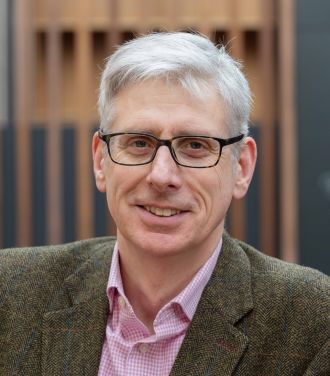Professor Simon Hooker
About
Professor Simon Hooker leads a research group working on plasma accelerators and novel sources of coherent x-rays. He is a tutorial fellow of Merton College.
Following undergraduate and graduate degrees in Oxford he moved to Stanford University before returning to Oxford as a Royal Society University Research Fellow.
In 2010 he was a co-recipient of the American Physical Society's John Dawson Award for Excellence in Plasma Physics Research, and he was awarded the IOP's Cecilia Payne-Gaposchkin Medal and Prize in 2020. He is a Fellow of the Institute of Physics and of the Optical Society of America.
With Colin Webb, FRS he has written an undergraduate textbook on Laser Physics for Oxford University Press.
Professor Simon Hooker outlines areas of expertise
Plasma accelerators:
Plasma accelerators can accelerate charged particles to very high (relativistic) energies in about one-thousandth of the distance required by a conventional (radio-frequency) machine, such as those at the heart of synchrotron light sources or the “atom smashing” machines at CERN. For example, my group has accelerated electrons to energies comparable to those used in a stadium-sized synchrotron (such as the Diamond Light Source), in an accelerator stage only a few centimetres long. Laser-plasma accelerators therefore offer a route to a new generation of very compact sources of energetic particles and radiation (including free-electron lasers). In the longer term they may be used for new generations of particle colliders.
Briefly, they work as follows. In a plasma accelerator a very intense laser pulse is directed through a plasma (an ionized gas). The laser pushes the electrons in the plasma away from itself, whereas the positive ions in the plasma do not move, owing to their much greater mass. After the laser pulse has passed, the electrons in the plasma are pulled back towards their original position by the positive ions, causing the electrons to oscillate around their original position. Through these mechanisms the laser pulse creates an electron density wave that trails the laser pulse. Enormous electric fields are generated between the regions of high and low electron density, and these can be used to accelerate charged particles.
Plasma accelerators can also be driven by intense bunches of charged particles (electrons or protons). This is not my direct research area, but I know a little about it.
High-power lasers:
As a graduate student and post-doc I worked on X-ray lasers. I now use high power (visible) lasers in my research, and I have written a textbook on laser physics. I therefore know something about lasers in general, although they are no longer the subject of my research.
Expertise
- Plasma accelerators
- High-power lasers
Selected publications
- Gev-Scale Accelerators Driven by Plasma-Modulated Pulses from Kilohertz Lasers, Phys Rev Lett 127, 184801 (2021)
- Meter-Scale Conditioned Hydrodynamic Optical-Field-Ionized Plasma Channels, Physical Review E 102, 053201 (2020)
- Low-Density Hydrodynamic Optical-Field-Ionized Plasma Channels Generated with an Axicon Lens, Physical Review Accelerators and Beams 22, 041302 (2019)
- Hydrodynamic Optical-Field-Ionized Plasma Channels, Physical Review E 97, 053203 (2018)
- Excitation and Control of Plasma Wakefields by Multiple Laser Pulses, Physical Review Letters 119, 044802 (2017)
- Developments in Laser-Driven Plasma Accelerators, Nature Photonics 7, 775 (2013)
- GeV Electron Beams from a Centimetre-Scale Accelerator, Nature Physics 2, 696 (2006)
